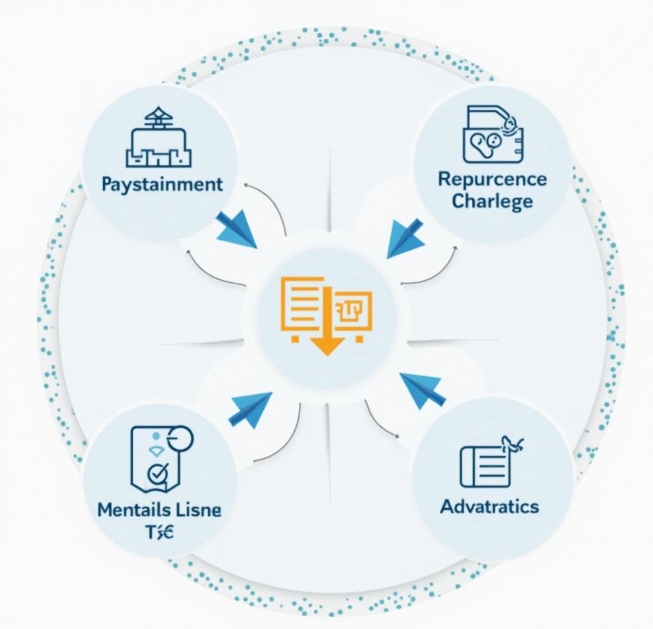Design of Product Management and Classification System in Mall Development
- latest articles
- 1.DApp Development & Customization: Merging Diverse Market Needs with User Experience 2.Analysis of the Core Technical System in DApp Project Development 3.How to achieve cross-chain interoperability in Web3 projects? 4.How does the tokenization of points reconstruct the e-commerce ecosystem? 5.How to Set and Track Data Metrics for a Points Mall? 6.What is DApp Development? Core Concepts and Technical Analysis 7.Inventory of commonly used Web3 development tools and usage tips 8.Development of a Distribution System Integrated with Social E-commerce 9.Six Key Steps for Businesses to Build a Points Mall System 10.What is DApp Development? A Comprehensive Guide from Concept to Implementation
- Popular Articles
- 1.Future Trends and Technology Predictions for APP Development in 2025 2.Analysis of the DeFi Ecosystem: How Developers Can Participate in Decentralized Finance Innovation 3.From Zero to One: How PI Mall Revolutionizes the Traditional E-commerce Model 4.DAPP Development | Best Practices for Professional Customization and Rapid Launch 5.Recommended by the Web3 developer community: the most noteworthy forums and resources 6.From Cloud Computing to Computing Power Leasing: Building a Flexible and Scalable Computing Resource Platform 7.How to Develop a Successful Douyin Mini Program: Technical Architecture and Best Practices 8.Shared Bike System APP: The Convenient Choice in the Era of Smart Travel 9.How to Create a Successful Dating App: From Needs Analysis to User Experience Design 10.From Design to Development: The Complete Process of Bringing an APP Idea to Life
With the rapid development of e-commerce, online stores have become an indispensable part of modern business. The core of a store lies in the design and implementation of its product management and categorization system, which plays a crucial role in the store's operations, user experience, and sales efficiency. The design of the product management and categorization system not only relates to the effective management of product information but also involves providing users with convenient product browsing, searching, and filtering functionalities. This article will explore the design principles, architecture, and implementation of product management and categorization systems in store development, focusing on how to achieve an efficient, flexible, and easily maintainable system.
I. The Importance of Product Management and Categorization Systems
The product management and categorization system in an e-commerce platform bears core responsibilities, directly impacting the storage, display, management, and query efficiency of product information. A well-designed system not only allows administrators to easily add, modify, and delete product information but also enables users to quickly find the products they need through efficient categorization and search systems, thereby improving conversion rates and user satisfaction.
1.1 Functional Requirements of the Product Management System
The product management system is the foundational system for backend merchant management, responsible for comprehensive management of product information. Its core functions include product entry, modification, deletion, listing/delisting, and inventory management. The system should possess the following functionalities:
Product Information Management: Supports management of basic product information, descriptions, prices, inventory, etc.
Product Image Management: Supports uploading and managing main product images and additional images.
Price and Inventory Management: Sets product prices, inventory, promotions, etc.
Product Tag Management: Assigns tags to products for easy categorization and filtering.
Product Status Management: Manages product listing/delisting status, controlling product visibility in the store.
Product Review Functionality: Requires review for new products or modified product information to ensure accuracy.
1.2 Functional Requirements of the Product Categorization System
The product categorization system is a tool that helps users quickly browse and filter products. The quality of the categorization system design directly affects the user's shopping experience; a reasonable categorization and filtering system can significantly enhance product exposure and conversion rates. Its core functions include:
Category Setup and Management: Supports multi-level product categorization, with each product assignable to multiple categories.
Category Display and Navigation: Provides category display on the frontend and supports quick product filtering by category.
Category Filtering: Filters products by price range, brand, rating, and other dimensions to help users quickly locate desired products.
Dynamic Adjustment of Categories: The categorization system needs flexible adjustment capabilities as market demands and products change.
II. Design Principles of Product Management and Categorization Systems
In store development, the design of product management and categorization systems should follow certain principles to ensure efficiency, scalability, and usability. Here are some key design principles:
2.1 Simplicity and Ease of Use
The interface design of the product management and categorization system should be simple and intuitive, allowing both administrators and users to get started quickly. Administrators should be able to swiftly complete tasks like adding, modifying, and deleting products in the backend, avoiding complex workflows. Frontend product browsing for users should also be simplified to ensure they can find the products they need in the shortest time possible.
2.2 Efficiency and Stability
The product management and categorization system needs to handle large amounts of data and must ensure efficient data access and operational response speeds. Especially when there are numerous product types and high user traffic, the system should perform well to prevent delays during product browsing. Additionally, system stability is crucial, as any minor malfunction could lead to loss of product data or incorrect displays, affecting the overall operation of the store.
2.3 Scalability and Flexibility
The types of products and categorization structures in a store may change over time, so the product management and categorization system must have good scalability. The design should consider future expansion needs, including new product types, categorization levels, attribute fields, etc. A loosely coupled architecture should be adopted to avoid bottlenecks during system expansion.
2.4 Data Consistency
In the product management system, the accuracy and consistency of product data are paramount. Information such as inventory, price, and descriptions must remain highly consistent. The system should ensure data synchronization to prevent information confusion or errors due to system failures.
III. Architecture Design of Product Management and Categorization Systems
3.1 System Architecture Overview
The product management and categorization system is typically divided into frontend and backend components. The frontend handles product display, category navigation, and filtering, while the backend manages product entry, management, review, and other operations. Data interaction between the two occurs via API interfaces.
Frontend: Responsible for product display, category display and switching, product filtering, user reviews, etc.
Backend: Responsible for maintaining and managing product information, including adding, deleting, editing, reviewing products, etc.
3.2 Database Design
Data storage for the product management and categorization system is the core of the entire system. A well-designed database ensures efficient operation and data consistency. Key tables in the database design should include:
Product Table: Stores basic product information such as product ID, name, description, price, inventory, images, etc.
Category Table: Stores product category information, including category ID, category name, parent category ID, etc.
Product-Category Association Table: Records the many-to-many relationship between products and categories, allowing a product to belong to multiple categories.
Product Tag Table: Stores product tags for marking products, facilitating filtering and searching.
3.3 Category Management
Product categorization is a vital method for displaying products in e-commerce platforms. A well-designed categorization system not only helps users quickly find products of interest but also aids merchants in increasing product exposure. Key considerations in categorization design include:
Category Hierarchy: Product categories should be simplified, avoiding overly deep hierarchies. Generally, three levels of categorization suffice for most needs.
Dynamic Adjustment: As the market and products evolve, the categorization structure needs flexible adjustments; the system should support quick addition, deletion, or modification of categories.
Multi-Category Support: Each product can be assigned to multiple categories simultaneously, allowing users to filter products from different perspectives.
3.4 Product Management
Product management functionality is the foundation of the store backend, allowing administrators to manage product information. Product management includes adding, modifying, deleting, listing/delisting, and inventory management. Administrators can set categories, tags, prices, inventory, descriptions, and other information for each product.
IV. Implementation of Product Management and Categorization Systems
4.1 Technology Selection
In store development, various technologies can be used to implement product management and categorization systems. Common technology stacks include:
Frontend Technologies: HTML, CSS, JavaScript, React, Vue, etc., responsible for displaying product information, category switching, and filtering functionalities.
Backend Technologies: Java, Python, Node.js, etc., responsible for data processing and interface implementation.
Databases: MySQL, MongoDB, etc., for storing product, category, tag information, etc.
4.2 Implementation of Product Management and Categorization
Implementation of Product Management: Through the backend management system, administrators can use forms to fill in product information, including name, price, inventory, description, images, etc. Data is saved to the database via API interfaces and displayed in product lists on the frontend.
Implementation of Category Management: Displays product categories in a tree structure, supporting addition, deletion, and modification of categories. Users can filter products by selecting categories while browsing.
V. Conclusion
The design of product management and categorization systems is a crucial component of store development. An efficient and flexible system can significantly enhance product management efficiency, optimize the user shopping experience, and ultimately promote store sales and growth. Designing an ideal system requires considering various factors, including functional requirements, data structure, system architecture, and user experience. In practical development, store developers need to continuously optimize system performance and maintainability based on specific needs to adapt to evolving market and user demands.
-

How does the tokenization of points reconstruct the e-commerce ecosystem?
With the continuous advancement of internet technology and the gradual prolifera···
-

How to Set and Track Data Metrics for a Points Mall?
With the rapid development of the e-commerce industry, points malls, as a common···
-

Development of a Distribution System Integrated with Social E-commerce
With the rapid development of internet technology, the e-commerce industry has e···

 Blockchain
Blockchain












